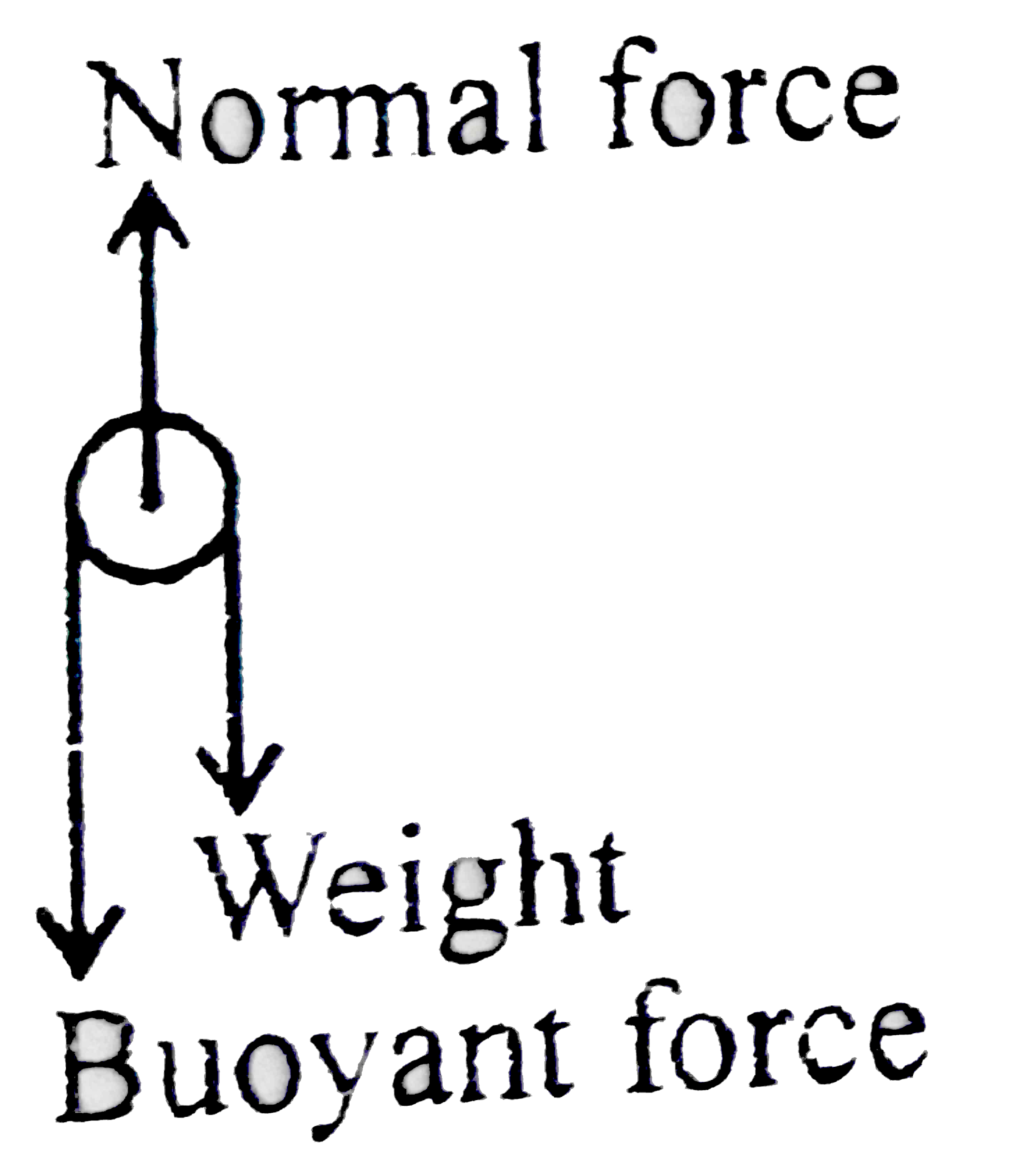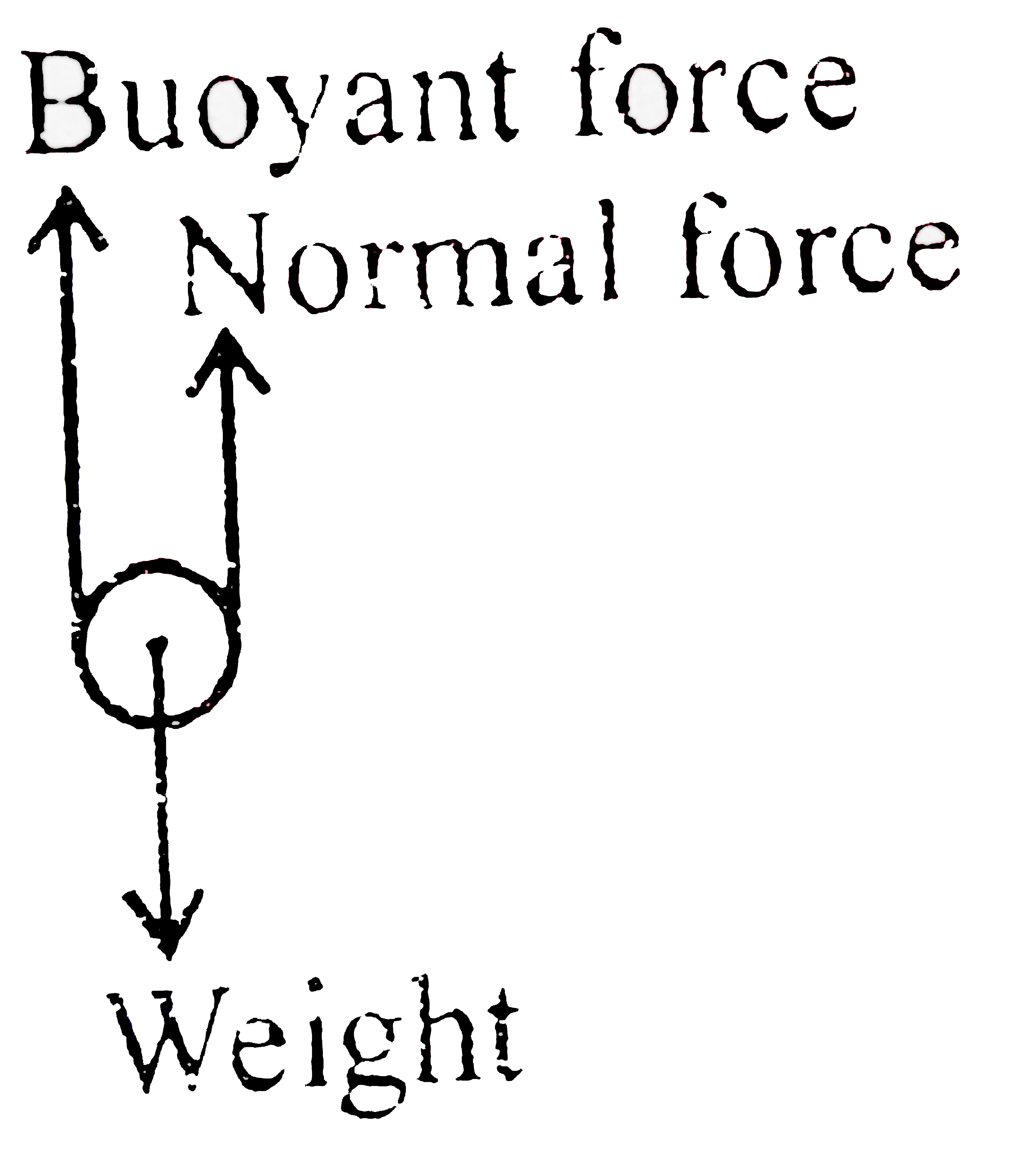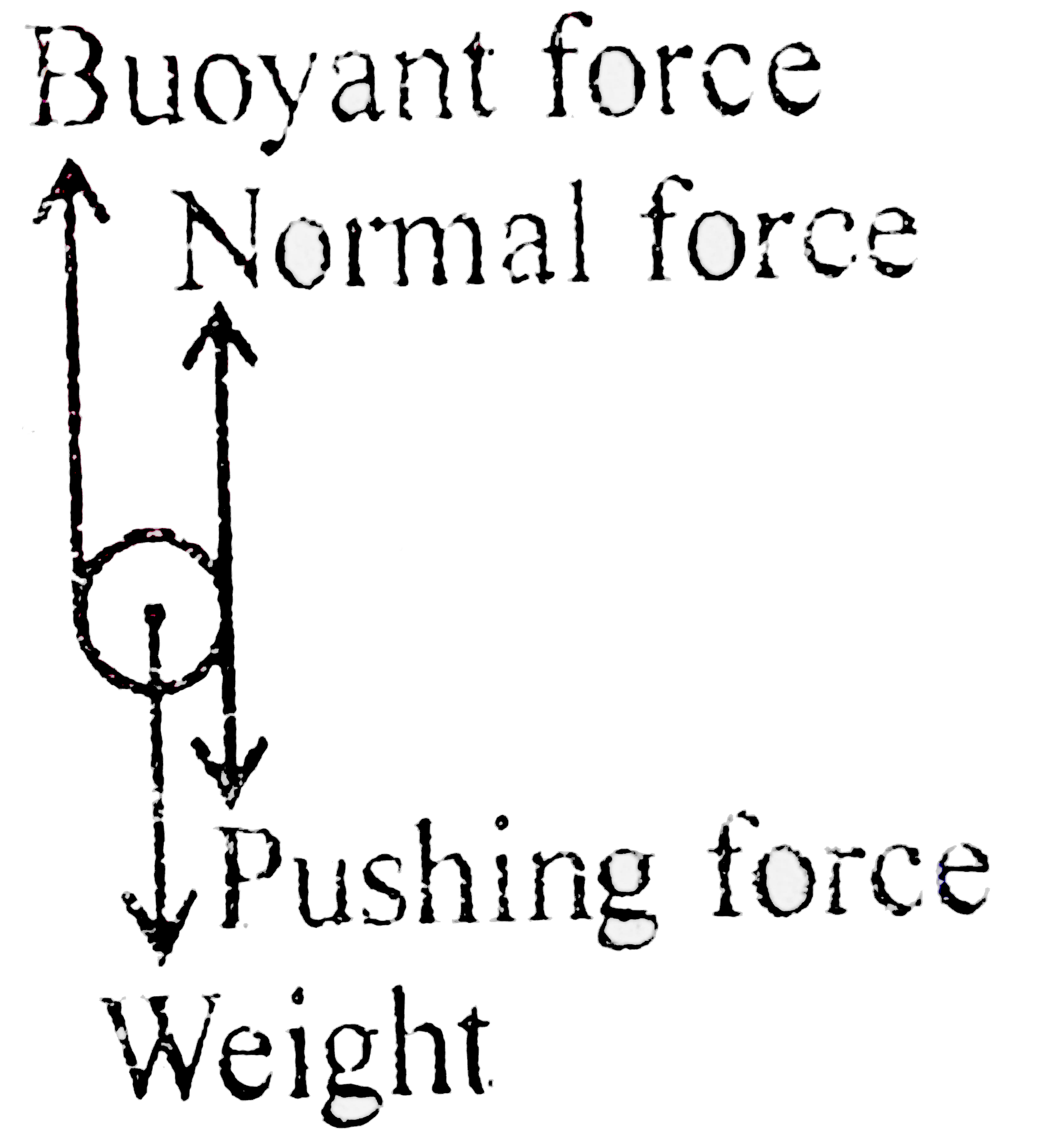The buoyant force F acting on a body depends on the density of medium ρ, volume of body immerese V and acceleration due to gravity g. Establish the relation using method of dimensions.
F=fn(ρ,V,g)
F∝ρaVbgc
[MLT−2]∝[ML−3]a[L3]b[LT−2]c
M1L1T−2∝MaL−3a+3b+cT−2c
Comparing power of M,L and T,
a=1
−3a+3b+c=1
−2c=−2
a=1,b=1,c=1
F∝ρvg⇒F=kρVg
From experiments, k=1
F=ρVg
Topper's Solved these Questions
- BOOK - CP SINGHCHAPTER - UNITS, DIMENIONS AND MEASUREMENTSEXERCISE - Exercises63videos
UNITS, DIMENIONS AND MEASUREMENTS
- BOOK - CP SINGHCHAPTER - TEMPERATURE AND THERMAL EXPANSIONEXERCISE - EXERCISES64videos
TEMPERATURE AND THERMAL EXPANSION
- BOOK - CP SINGHCHAPTER - VECTORSEXERCISE - Excercises66videos
VECTORS
Similar Questions
Knowledge Check
- Question 1 - Select One
Buoyant force acting on a body immersed in a fluid depends on:
Athe shape of the bodyBthe mass of the bodyCthe mass of the fluid displacedDdepth to which body is immersed - Question 2 - Select One
The largest mass (m) that can be moved by a flowing river depends on velocity (v), density (ρ) of river water and acceleration due to gravity (g). The correct relation is
Am∝ρ2v4g2Bm∝ρv6g2Cm∝ρv4g3Dm∝ρv6g3 - Question 3 - Select One
Swimming is an interesting sport, and one that relaxes us also. Normally and average human being would drown in water.As a person goes inside water , the water exert a force on it in upwared direction. This force is called buyont froce. The force is given by V dg, where d is density of water, V is volume of body inside water and g is acceleration due to gravity. normally, this force is lesser than this weight. so the man pushes water to get an additional force on himself. this effort is known as swimming. assume water has a density of 1000kg/m3
If a sphere is resting on the ocean floor, its free body diagram would beA B
B C
C D
D
What is the effect of mass of the body on acceleration due to gravity (g)?
View SolutionConsider a simple pendulum having a bob attached to a string that oscillates under the action of a force of gracity. Suppose that the period of oscillation of the simple pendulum depends on its length (I), mass of the bob (m) and acc. Due to gravity (g). Derive the expression for its time period using method of dimensions.
View SolutionExperiments reveal that the velocity v of water waves may depend on their wavelength λ, density of water ρ, and acceleration due to gravity g. Establish a possible relation between vandλ,g,ρ.
View SolutionThe acceleration due to gravity does dose not depend on the…………….. Of the body.
View SolutionThe velocity v of waves produced in water depends on their wavelength λ, the density of water d, and acceleration due to gravity g. These quantities are related as (where k is a dimensionless constant)
View Solution

